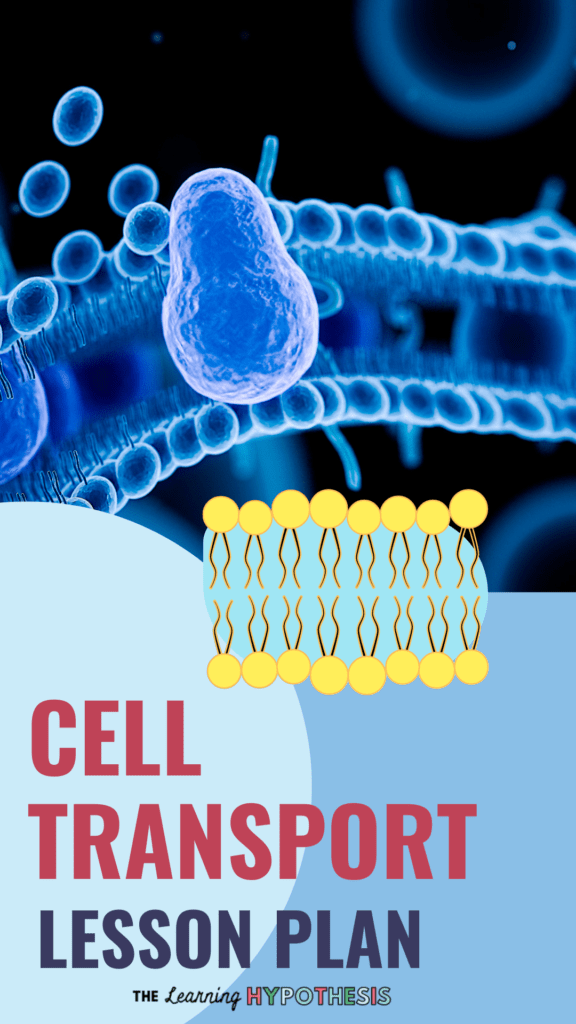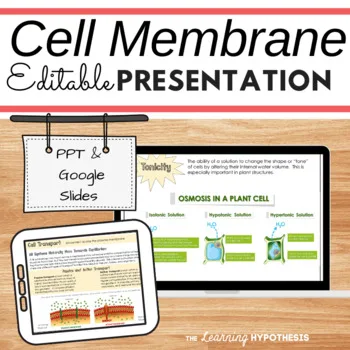Cell Transport Lesson Plan
Cell transport and movement across the membrane is an essential topic in the life sciences. Many concepts moving forward will refer to the process that you teach in this cell membrane unit. I’m going to cover the basics of cell transport lesson plan and some of my favorite resources to help students really understand.
I love to include visual aids, hands-on learning, examples, and technology to keep kids engaged. In this cell transport lesson plan we will talk about how I incorporate these strategies.

Getting started on the right foot.
I try not to start immediately with kids taking notes because that seems to zap all of the potential fun out of it. I like to have them involved in setting up an activity and I like a fun way to cover vocabulary. My two favorites for learning new vocabulary are my mystery worksheets and crossword puzzles.
Using Visual Aids for Cell Membrane Dynamics
Visual aids are an excellent way to help students understand the complex processes involved in cellular transport. You can use slide presentations and diagrams, animations, and videos to illustrate the different types of cellular transport, such as diffusion, osmosis, active transport, and facilitated diffusion. Visual aids make it easier for students to grasp the concepts and can help them remember the details more effectively.
Use Real World Examples Cellular Transport
Cellular transport occurs in many different biological systems, and using real-world examples can help students understand the importance of the process. For example, you can discuss how red blood cells use active transport to maintain their shape, or how plants use osmosis to absorb water from the soil. Real-world examples make the concepts more relevant and help students see the practical applications of what they are learning.
I use two examples to illustrate passive transport.
One is an object rolling down the hill. It doesn’t require energy to keep moving down the hill. I ask student to picture the concentration gradient like a hill. Always moving from higher to lower.
The other example I use is a perfume counter in a department store. They will smell the perfume closest to the counter because it is at a higher concentration, but the molecules move around the store and once you get to a low enough concentration you won’t smell them any more. This happens naturally and doesn’t require a vacuum to move them through the store.

The role of the selectively permeable membrane
I like to make sure that students understand that somethings are moving through and some aren’t. The selective nature is what makes the membrane so powerful. This is a great time to review the criteria that impact the permeability. The size, charge, solubility, and presence of carrier proteins all impact whether a substance will move across the membrane. The direction of movement will be impacted by the concentration gradient and the energy requirement.
Make connections to other biological concepts
Connecting cellular transport to other concepts in biology can help students see how the different parts of the discipline fit together. For example, you can discuss how cellular transport is related to cell respiration and photosynthesis. Making connections between concepts can help students remember the details and see the bigger picture.
Cell Transport Lesson Plan Activity
Hands-on learning activities are an excellent way to help students understand the principles of cellular transport. You can demonstrate the process of osmosis by placing a potato in a solution with different concentrations of salt. You can also use a dialysis bag to demonstrate the process of diffusion.
These experiments allow students to see cellular transport in action and make the concepts more tangible. This can be done as a demonstration OR as an activity. These will take some time so I like to set this up and make predictions and go on about the rest of the lesson.

My favorite activity to illustrate both passive transport AND selective permeability
Starch and Iodine Demonstration (or you could do this as a student activity):
- Create a cornstarch and water mixture.
- Tie one end of the dialysis tubing.
- Add the mixture and tie off the other end.
- Rinse dialysis tubing.
- Now place dialysis tubing in a beaker with distilled water and iodine.
- Give it between 20-40 minutes and student should see the iodine moving into the tubing because it will turn blue/black/purple.
You can also do a gummy bear lab or the magic eggs.

Using Technology in Your Cell Transport Lesson Plan
There are many interactive tools available online that can help students understand cellular transport. For example, there are simulations that allow students to manipulate different variables and see the effects on cellular transport. Using interactive technology can help engage students and make the learning process more enjoyable. I have a self-checking worksheet that is a great way to get more student engagement and check for understanding.
Cell Transport Lesson Plan Follow Up
In conclusion, teaching about cellular transport can be challenging, but by using visual aids, conducting experiments, using real-world examples, making connections, and using interactive technology, you can help students understand this critical concept more effectively.
Here are a few of my go to resources for cell transport:
love using escape rooms as part of my review plan.








